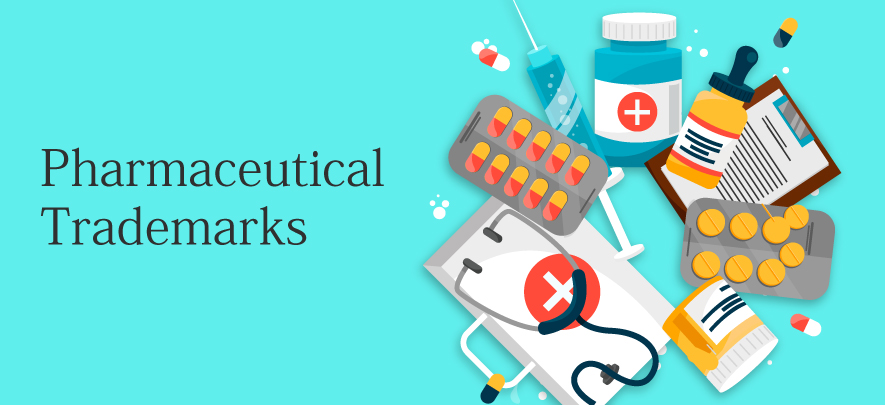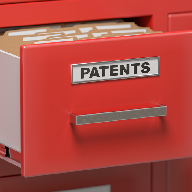How to create strong pharmaceutical trademarks

Legal & Compliance
313 week ago — 11 min read
Background: Trademarks are special phrases or symbols which distinguishes your product or service from the rest in the market. A pharmaceutical trademark likewise is a mark that consumers use to identify trustworthy medical goods. GlobalLinker member Srinivasan Raman shares how to create a strong pharmaceutical trademark for your products.
Pharmaceutical trademarks are essential since they enable customers to locate their coveted items, and furthermore urges pharmaceutical organisations to keep up the nature of their products. Without a solid trademark, it would be unthinkable for customers to differentiate between accessible items.
Pharmaceutical trademarks can decrease medicine mistakes in health care settings. Likewise, a solid trademark enables individuals to pick the right medication. Trademarks can boost producers to guarantee the wellbeing of their existent medications and put resources into new prescriptions.
Name selection process for pharmaceutical trademarks
Dissimilar to trademark proprietors in different business parts, pharmaceutical organisations confront an assortment of extra issues, including wellbeing, administrative prerequisites, etymological promoting issues and political components. Finding a compelling and satisfactory pharmaceutical brand name is thus a serious and complex methodology.
The course of events from improvement of a name to advertising and dispatch can be extensive. It is consequently prudent to initiate the naming choice one to two years prior to market launch.
At first, potential hopeful names considered reasonable for the drug concerned are chosen by the in-house pharma promoting group or by a named publicising office. Given the complex legitimate and administrative screening, pharmaceutical organisations for the most part distinguish a substantial determination of potential names with the end goal to touch base at a decision of somewhere in the range of four and five applicant names for every item.
Usually practice is to choose watchwords for potential pharmaceutical brands, which will permit end clients to quickly make an association between the medicinal item they are searching for and its dynamic fixings, the malady it is endorsed to fix or if nothing else the organ to which it relates.
A level of clarity is typical in the pharmaceutical field, since this compares to the undeniable requirement for acknowledgment and conviction required for buyers to recognise the items they require and to stay away from wellbeing dangers due to non-distinguishing proof of proper prescription. As need be, the important (Italian and European) case law in this field frequently thinks about slight adjustments or augmentations to mark names as adequate to maintain a strategic distance from a probability of perplexity (i.e. the threshold for distinctiveness and non-descriptiveness in the pharma field is lower than that in other trademark fields). However, in order not to create weak or confusingly similar trademarks, it is advisable to avoid certain prefixes and/or suffixes (eg, ‘pharma’ or ‘anti’).
It is also a common practice for many pharmaceutical companies simply to add further letters to a specific pharma stem (based on the drug’s chemical compositions), thus forming names that are very close to the name of the active ingredient.
Indian Trademark Law vis-à-vis International Nonproprietary Names (INN)
The Controller General of Patents, Designs and Trade Marks (CGPDTM) states that Trade Mark Examiners will be mandated to examine pharmaceutical trademarks for any similarities to the International Nonproprietary Names (INNs) published. Any names which are identical to those on the INN list will not be registered as a pharmaceutical trademark.
‘Section 13’ of the Trade Marks Act, 1999 prohibits the registration of names of chemical elements or INNs which have been declared by the World Health Organisation (WHO) and notified by the Registrar of Trade Marks.
As unique names, INN has to be distinctive in sound and spelling, and should not be liable to confusion with other names in common use. To make INN universally available, they are formally placed by WHO in the public domain, hence their designation as ‘non-proprietary’. They can be used without any restriction whatsoever to identify pharmaceutical substances.
Another important feature of the INN system is that the names of pharmacologically-related substances that demonstrate their relationship by using a common ‘stem’. By the use of common stems the medical practitioner, the pharmacist, or anyone dealing with pharmaceutical products can recognise that the substance belongs to a group of substances having similar pharmacological activity.
Few points to be taken care of and to be avoided while selecting a name
- Medical abbreviations, dose designation or symbols that might contribute to medical errors.
- Marks that consist of numerals.
- Trademarks that have no established meaning or that might otherwise cause confusion.
- Marks referring to inert or inactive ingredients which could be misleading.
- Similarities in spelling and pronunciation with existing trademarks, generic names and ingredient names.
Multiple checks for availability and accessibility of new pharmaceutical trademarks
Getting ready for a new pharmaceutical brand, organisations need to play out a worldwide trademark search to ensure that their coveted mark isn't as of now being utilised and that their marking doesn't have a negative importance in specific nations. It is important to obtain health authority approval, as well as approval from the correct trademark registries where ever they want to introduce the product. This should be taken well before attempting to sell a pharmaceutical product.
Focus should be more with priority market i.e., the territorial planning of introducing the product and that too has to be done well in advance so as they can save huge money incurred for the regulation and registration process, and can take a consultation with trademark attorney.
Trademark registration strategy
After selecting an attractive, easy to remember and marketable name, you should focus and plan out for a cost-effective registration strategy.
Besides national registrations, one can opt for filing the mark in key countries like United States, Russia, China, India, Australia and Switzerland, either by recording singular nations according to the necessity and their particular market target or else you have a choice to document through Madrid by utilising single passage shape for numerous nations, this depends upon the scale of marketing plan and establishment focused by the companies. As Madrid filing would be comparatively cost effective if an organisation has the plan to enter in multiple countries with the mark selected for to be launched.
Enlisting a trademark guarantees that pharmaceutical organisations can uphold their IP rights both through traditions specialists and through the courts in case of trademark encroachment and forging.
Pharmaceutical Trademark and Regulatory Clearances
After choosing possible names for a new drug or product, pharmaceutical companies must work toward regulatory and legal approval, which can be extremely difficult and time consuming. Generally, pharmaceutical products are sold worldwide, which means pharmaceutical companies need to choose a trademark that is not available or a pre-existing mark in every country where the product will be sold.
Use of slogans and taglines
An ongoing pattern for organisations looking for unique and exceedingly unmistakable brands is to register taglines and slogans as trademarks. The intensity of trademarks and slogans has changed advertising methods for a few organisations – a prime model being Pfizer's 'More than Medication' slogans. Nonetheless, trademarks keep on speaking to a test for pharmaceutical organisations. It has long been proven that strong slogans and taglines are excellent tools in allowing companies to build and maintain brand identity in the minds of consumers.
Handling social media exposure
Web-based social networking speaks to the most powerful showcasing device accessible to organisations. In recent couple of years, pharmaceutical organisations have been more hesitant than an organisation in different segments to enter this field, because of the risk for correspondences distributed alone sites or dialog sheets, feeds and posts on their web-based social networking pages that abuse strict pharma publicising laws for therapeutic items.
Be that as it may, web-based social networking has turned out to be progressively vital, enabling organisations to achieve a bigger worldwide target showcase. In particular, social media allows pharmaceutical companies to interact more closely with individuals, as well as larger groups of patients, and has also become a brilliant tool for promoting understanding of drugs and their side effects. One can include descriptions of the products, holograms, bar codes, features on the goods and their appearance, typical features of the markings if any, labels and packaging.
Conclusion
The way to offer another pharmaceutical brand name from origination for sale to the public is regularly burdensome, tedious and costly. Industrious pre-documenting screening forms with the pertinent health authorities and trademark registries are fundamental to guarantee a sheltered entry to application for enlistment and trademark protection and enforcement later down the line. It is only with effective applications for registration and registrations in place that a product will be ready for marketing launch. If an attractive, easy to remember and marketable name and the correct processes are followed, research confirms that the chances of increased sales are substantially higher. Further, if infringement and counterfeiting surfaces, the rightful holder will be prepared to complete suitable implementation measures and secure their carefully chosen brand.
To explore business opportunities, link with me by clicking on the 'Connect' button on my eBiz Card.
Disclaimer: The views and opinions expressed in this article are those of the author and do not necessarily reflect the views, official policy or position of GlobalLinker.
Posted by
Srinivasan RamanFounder of 4A IP Solution, has handled various verticals in business development with India’s topmost brands and worked in a lead role for multiple launches in India and...
View Srinivasan 's profile
Other articles written by Srinivasan Raman
10 things entrepreneurs should know about patents
300 week ago
Most read this week
Trending
Ecommerce 1 day ago










Comments
Share this content
Please login or Register to join the discussion